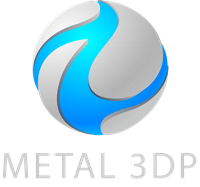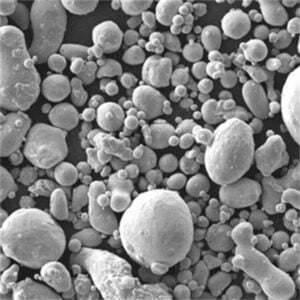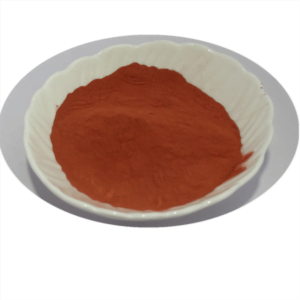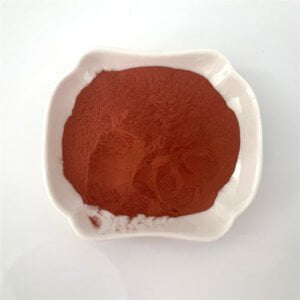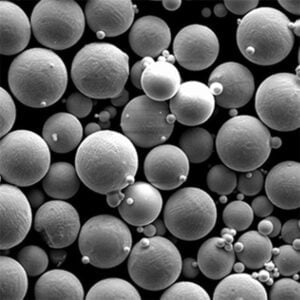Inconel 625 ist eine Nickel-Chrom-Molybdän-Legierung, die für ihre hohe Festigkeit, hervorragende Korrosionsbeständigkeit und ausgezeichnete Verarbeitbarkeit bekannt ist. Sie wird häufig in Anwendungen eingesetzt, die außergewöhnliche Leistungen unter extremen Bedingungen wie Hitze, Druck und korrosiven Umgebungen erfordern.
Inconel 625-Pulver ist die pulvermetallurgische Form dieser Superlegierung, die aus feinen Inconel 625-Partikeln besteht, die sich für die additive Fertigung und andere pulverbasierte Herstellungsverfahren eignen. Dieser Artikel bietet einen umfassenden Überblick über Inconel 625-Pulver, einschließlich seiner Zusammensetzung, Eigenschaften, Anwendungen, Spezifikationen, Preise, Lieferanten, Vor- und Nachteile im Vergleich zu anderen Legierungen und mehr.
Zusammensetzung von Inconel 625-Pulver
Die Legierung Inconel 625 erhält ihre vorteilhaften Eigenschaften durch die Mischung von Nickel, Chrom, Molybdän, Niob und anderen Legierungselementen in ihrer chemischen Zusammensetzung. Hier ist die typische Zusammensetzung von Inconel 625 Pulver:
| Element | Gewicht % |
|---|---|
| Nickel (Ni) | 58,0 min |
| Chrom (Cr) | 20.0-23.0 |
| Molybdän (Mo) | 8.0-10.0 |
| Niob (Nb) + Tantal (Ta) | 3.15-4.15 |
| Eisen (Fe) | 5,0 max |
| Kupfer (Cu) | 0,5 max |
| Mangan (Mn) | 0,5 max |
| Silizium (Si) | 0,5 max |
| Aluminium (Al) | 0,4 max |
| Kohlenstoff (C) | 0,1 max |
| Schwefel (S) | 0,015 max |
| Phosphor (P) | 0,015 max |
| Bor (B) | 0,006 max |
Der hohe Nickel- und Chromgehalt verleiht Inconel 625 eine ausgezeichnete Oxidations- und Korrosionsbeständigkeit. Molybdän erhöht die Korrosionsbeständigkeit weiter. Niob trägt durch Ausscheidungshärtung zur Verstärkung der nickelbasierten Matrix bei. Eisen, Kupfer und andere Elemente verfeinern das Korngefüge und tragen zur Verarbeitbarkeit bei. Der niedrige Kohlenstoffgehalt minimiert die Ausscheidung von Karbiden beim Schweißen oder bei der Wärmebehandlung.

Eigenschaften von Inconel 625-Pulver
| Eigentum | Beschreibung | Einheiten | Auswirkungen auf die Funktionalität |
|---|---|---|---|
| Chemische Zusammensetzung | Inconel 625 powder is primarily composed of nickel (Ni), typically around 60-70%, with significant additions of chromium (Cr) for oxidation resistance (19-23%) and molybdenum (Mo) for high-temperature strength (8-10%). Smaller amounts of niobium (Nb), iron (Fe), and manganese (Mn) further enhance its properties. | Gewicht % | The specific balance of elements determines the exceptional properties of Inconel 625, making it suitable for demanding applications. |
| Morphologie der Partikel | Inconel 625 powder is typically spherical in shape with a smooth surface. Particle size distribution is tightly controlled to ensure optimal flow characteristics for additive manufacturing processes and minimize porosity in finished parts. | Micrometers (µm) | Spherical morphology allows for even packing during printing, leading to denser parts with improved mechanical properties. Precise size distribution ensures consistent flow during the printing process. |
| Scheinbare Dichte | The apparent density of Inconel 625 powder refers to the mass of powder per unit volume in its loose, uncompacted state. It typically ranges from 4.5 to 5.0 g/cm³. | Grams per cubic centimeter (g/cm³) | Apparent density influences powder handling and storage requirements. It also affects the packing efficiency during printing, impacting material usage and final part density. |
| Zapfstellendichte | Tap density represents the density of Inconel 625 powder after a standardized tapping procedure. It is generally higher than the apparent density due to the rearrangement of particles and is closer to the packing density achieved during printing. | Grams per cubic centimeter (g/cm³) | Tap density provides a more realistic picture of how efficiently the powder packs under pressure, influencing the final density and mechanical properties of printed parts. |
| Fließfähigkeit | Flowability refers to the ease with which Inconel 625 powder flows under gravity. It is crucial for smooth operation in additive manufacturing processes. Good flowability ensures consistent powder feeding and minimizes the risk of layer irregularities. | Seconds per 50 grams (s/50g) | Measured using standardized tests, flowability indicates how readily the powder moves, impacting powder bed formation and printability. |
| Mechanical Properties (Room Temperature) | Inconel 625 powder exhibits excellent mechanical properties at room temperature. These include high tensile strength (typically exceeding 800 MPa), good yield strength (around 450 MPa), and reasonable ductility (elongation exceeding 50%). | Megapascals (MPa) and Percent (%) | The combination of high strength, good ductility, and toughness makes Inconel 625 powder suitable for applications requiring structural integrity under moderate loads. |
| Mechanical Properties (Elevated Temperature) | Inconel 625 powder retains its impressive mechanical properties at elevated temperatures, a key characteristic for its use in hot sections of jet engines and other high-temperature applications. Tensile and yield strengths remain significant even at temperatures exceeding 800°C. | Megapascals (MPa) at specific temperatures (°C) | Exceptional high-temperature strength allows components made from Inconel 625 powder to function reliably under extreme thermal conditions. |
| Oxidationsbeständigkeit | Inconel 625 powder possesses outstanding resistance to oxidation due to the formation of a protective chromium oxide layer on its surface at high temperatures. This layer hinders further oxygen diffusion and prevents significant material degradation. | The excellent oxidation resistance enables Inconel 625 powder to withstand prolonged exposure to hot, oxygen-rich environments, making it ideal for applications like combustor liners and turbine blades. | |
| Korrosionsbeständigkeit | Inconel 625 powder demonstrates superior resistance to various corrosive environments, including aqueous solutions, acids, and alkalis. This property is attributed to the synergistic effect of chromium, molybdenum, and nickel in its composition. | The exceptional corrosion resistance allows components made from Inconel 625 powder to function reliably in harsh chemical environments, such as those encountered in chemical processing equipment and marine applications. |
Anwendungen von Inconel 625-Pulver
| Industrie | Anmeldung | Wichtige Eigenschaften genutzt |
|---|---|---|
| Luft- und Raumfahrt | * Aircraft ducting systems * Engine exhaust systems * Thrust reverser systems * Turbine shroud rings * Nachbrenner-Komponenten |
* High-temperature strength: Inconel 625 powder retains its structural integrity even under the intense heat of jet engines, enabling efficient and reliable performance. * Excellent oxidation resistance: The alloy composition minimizes the formation of oxides at elevated temperatures, preventing component degradation and ensuring smooth airflow. * Superior creep resistance: At high temperatures and constant stress, Inconel 625 powder exhibits minimal deformation, crucial for maintaining precise tolerances in critical engine parts. |
| Öl- und Gasförderung | * Downhole well components * High-pressure pipelines * Processing equipment for corrosive fluids |
* Exceptional corrosion resistance: Inconel 625 powder effectively resists attack from harsh chemicals like sour gas (containing hydrogen sulfide) and chloride-rich brines, extending component lifespan in aggressive downhole environments. * High fatigue strength: The material can withstand repeated stress cycles encountered during drilling and production operations, minimizing the risk of premature failure. * Good weldability: Inconel 625 powder allows for strong and reliable welds, ensuring secure connections in pipelines and well components. |
| Marine | * Propeller shafts * Rudder components * Heat exchangers for seawater systems * Desalination plants |
* Outstanding resistance to seawater corrosion: Inconel 625 powder is impervious to the detrimental effects of saltwater, preventing pitting, crevice corrosion, and biofouling, which can compromise structural integrity and functionality. * High mechanical strength: Even in cold ocean depths, Inconel 625 powder maintains its strength, ensuring reliable performance of critical marine components. * Hydrolysis resistance: The material is resistant to the breakdown caused by seawater, safeguarding the integrity of equipment used in desalination processes. |
| Chemische Verarbeitung | * Reaction vessels * Heat exchangers * Distillation columns * Transfer piping * Valves for handling corrosive chemicals |
* Exceptional resistance to a wide range of chemicals: Inconel 625 powder can withstand exposure to harsh acids, alkalis, and oxidizing agents, making it ideal for containment and processing equipment in the chemical industry. * High creep resistance at elevated temperatures: The material retains its shape under sustained stress and high heat, ensuring safe and efficient chemical reactions. * Good fabricability: Inconel 625 powder can be formed into complex shapes using additive manufacturing techniques, enabling the creation of customized components for specific chemical processing needs. |
| Kontrolle der Umweltverschmutzung | * Flue gas desulfurization (FGD) systems * Scrubber equipment handling corrosive gases * High-temperature filters |
* Superior resistance to sulfur compounds and acidic environments: Inconel 625 powder effectively resists the corrosive effects of sulfur dioxide and other acidic gases present in flue gas, ensuring the long-term durability of pollution control equipment. * High-temperature oxidation resistance: The material maintains its integrity at the elevated temperatures encountered in FGD systems, enabling efficient and reliable operation. * Good weldability: Allows for strong and secure connections in complex pollution control equipment. |
Spezifikationen und Qualitäten von Inconel 625-Pulver
| Spezifikation | Beschreibung | Typischer Wert | Einheiten | Importance for Additive Manufacturing |
|---|---|---|---|---|
| Chemische Zusammensetzung | The elemental makeup of Inconel 625 powder, crucial for achieving its advantageous properties. | |||
| Nickel (Ni) | Minimum content ensures good ductility and forms the base of the alloy. | ≥ 58% | wt% | Provides a strong, formable matrix for the other elements. |
| Chrom (Cr) | Range dictates oxidation resistance and high-temperature strength. | 20-23% | wt% | Creates a protective chromium oxide layer at elevated temperatures. |
| Eisen (Fe) | Maximum level controls mechanical properties and cost. | ≤ 5% | wt% | Contributes to strength and keeps the material cost-effective. |
| Molybdän (Mo) | Range influences corrosion resistance, especially in high-chloride environments. | 8-10% | wt% | Enhances resistance to pitting and crevice corrosion. |
| Niobium (Nb) | Specific range promotes high-temperature strength and creep resistance. | 3.15-4.15% | wt% | Strengthens the grain boundaries and improves performance at elevated temperatures. |
| Kobalt (Co) | Maximum level refines grain size and improves high-temperature strength. | ≤ 1% | wt% | Contributes to strength and refines the microstructure. |
| Silizium (Si) | Maximum limit controls fluidity and castability. | ≤ 0.50% | wt% | Minimizes casting defects and improves powder flow. |
| Phosphorus (P) & Sulfur (S) | Combined maximum content ensures good weldability and ductility. | ≤ 0.15% | wt% | Prevents embrittlement during welding and maintains good mechanical properties. |
| Partikelgrößenverteilung | The range of particle diameters in the powder, impacting flowability, packing density, and final part properties. | Varies based on application | μm | |
| Dv10 | Diameter at which 10% of the particles are smaller. | μm | Affects powder flow and packing density, influencing surface finish and printability. | |
| Dv50 | Median particle diameter. | μm | Determines packing density and influences mechanical properties of the final part. | |
| Dv90 | Diameter at which 90% of the particles are smaller. | μm | Impacts layer thickness and influences surface roughness of the final part. | |
| Morphologie der Partikel | The shape of the powder particles, affecting packing density, flowability, and printability. | Typically spherical | – | |
| Sphärizität | Ratio of a particle’s diameter to its equivalent sphere’s diameter. | ≥ 0.90 | – | Spherical particles flow better, pack more densely, and improve laser penetration during printing. |
| Fließfähigkeit | The ease with which powder flows, critical for consistent layer formation in additive manufacturing processes. | Measured by various techniques | g/s | Good flowability ensures smooth powder feeding and minimizes printing defects. |
| Scheinbare Dichte | The mass of powder per unit volume, influencing powder handling and bed density during printing. | Varies based on particle size and morphology | g/cm³ | Affects powder usage and influences the density of the final printed part. |
| Zapfstellendichte | The density of powder after a standardized tapping routine, indicating packing efficiency. | Higher density preferred | g/cm³ | Higher tap density signifies better packing and improves the mechanical properties of the final part. |
| Klassen | Different specifications for Inconel 625 powder based on particle size and other properties. | ASTM B446, AMS 5599, AMS 5666 | – | |
| ASTM B446 | Standard specification for Inconel 625 powder used in various applications. | – | – | General-purpose grade suitable for a wide range of additive manufacturing processes. |
| AMS 5599 & 5666 | Aerospace Material Specifications for Inconel 625 powder with tighter control on chemistry and particle characteristics. | – | – | Grades meeting stricter requirements for critical aerospace applications. |
Inconel 625 Pulver Preis
Inconel 625 powder, a nickel-based superalloy prized for its exceptional strength, corrosion resistance, and high-temperature performance, is a vital material in additive manufacturing (3D printing) and other industrial applications. Understanding Inconel 625 powder pricing requires considering several factors:
| Faktor | Beschreibung | Auswirkungen auf den Preis |
|---|---|---|
| Menge | The amount of Inconel 625 powder purchased significantly affects the price per unit weight. Suppliers typically offer tiered pricing, with lower per-gram costs for larger quantities. | Larger quantities generally result in a lower price per gram. |
| Partikelgröße und Morphologie | The size and shape of the Inconel 625 powder particles influence printability, material properties of the finished product, and powder handling requirements. | Spherically shaped powders with a narrow particle size distribution are generally more expensive due to the additional processing involved. |
| Chemische Zusammensetzung | Minor variations in the chemical makeup can optimize Inconel 625 powder for specific applications, such as those requiring maximum strength or corrosion resistance. | Powders with a tighter chemical specification may come at a premium. |
| Anbieter | The reputation, geographic location, and production capacity of the supplier can influence pricing. | Reputable suppliers with stringent quality control measures may command higher prices. |
| Anmeldung | The intended use of the Inconel 625 powder can influence pricing. For instance, powders for aerospace applications may undergo more rigorous testing, impacting cost. | Powders intended for critical applications may be more expensive. |
Wo zu kaufen Inconel 625-Pulver
Inconel 625 powder, a superhero among metal powders with its high-temperature resilience, corrosion-fighting abilities, and superior strength, is a cornerstone of additive manufacturing and various industrial applications. However, its price isn’t a one-size-fits-all situation. Delving into the world of Inconel 625 powder pricing requires examining several key factors, like a detective case:
| Faktor | The Intricate Web | How it Affects the Price Tag |
|---|---|---|
| Quantity: The Balancing Act | Whether you’re needing a thimbleful or a treasure chest full, the amount of Inconel 625 powder you purchase significantly impacts the price per unit weight. Suppliers often have tiered pricing structures, offering a lower price per gram for those who buy in bulk. | The more powder you buy, the lower the price per gram typically goes. |
| Particle Size and Morphology: The Powder’s Fingerprint | Imagine the Inconel 625 powder particles – are they uniform spheres or an uneven cast of characters? The size and shape (morphology) of these particles influence how easily they can be 3D printed, the final product’s properties, and how they need to be handled. | Spherically shaped powders with a narrow range of particle sizes are generally more expensive due to the extra processing involved in achieving this consistency. |
| Chemical Composition: A Recipe for Performance | While the core ingredients of Inconel 625 powder remain the same, slight variations in its chemical makeup can be made to optimize it for specific applications. For example, some applications might require the powder to have the absolute maximum strength, while others might prioritize top-notch corrosion resistance. | Powders with a more precise chemical composition may come at a premium price. |
| Supplier: The Source of the Spark | The reputation, location on the map, and production capacity of the supplier you choose can all influence pricing. Suppliers known for their stringent quality control measures may command higher prices, but you’re also getting the guarantee of a high-quality product. | Reputable suppliers with a proven track record of quality might have higher prices compared to others. |
| The Powder’s Purpose: A Journey Defined | What grand adventure awaits the Inconel 625 powder you purchase? The intended application can influence pricing. For instance, powders destined for use in critical aerospace applications might undergo more rigorous testing, adding to the cost. | Powders designed for demanding applications, like aerospace, may be more expensive. |
Vor- und Nachteile von Inconel 625-Pulver
| Merkmal | Vorteile | Benachteiligungen |
|---|---|---|
| Leistung bei hohen Temperaturen | * Außergewöhnliche Stärke: Inconel 625 powder retains its structural integrity and strength at extremely high temperatures, exceeding 1800°F (982°C). This makes it ideal for applications in aerospace (turbine blades, exhaust components), power generation (heat exchangers, combustors), and other industries encountering intense heat. * Oxidationsbeständigkeit: The carefully formulated blend of elements in Inconel 625 powder grants it superior resistance to oxidation. This prevents the material from degrading or weakening at high temperatures, ensuring long-lasting performance in hot, oxygen-rich environments. |
* High Material Cost: Nickel-based superalloys like Inconel 625 are inherently more expensive than commonly used materials like steel or aluminum. The cost of the powder itself is high, and specialized printing processes can further inflate production costs. |
| Korrosionsbeständigkeit | * Broad Spectrum Protection: Inconel 625 powder boasts exceptional resistance to a wide range of corrosive environments. It excels in applications exposed to seawater, harsh chemicals (acids, alkalis), and other aggressive media. This makes it a valuable material for the chemical processing industry, marine engineering, and applications involving fluid handling. | * Not Universally Resistant: While highly resistant, Inconel 625 powder does have limitations. Certain molten salts and specific highly concentrated acidic environments can cause corrosion. Careful material selection based on the exact operating conditions is crucial. |
| Flexibilität bei der Gestaltung | * Additive Manufacturing (AM) Compatibility: Inconel 625 powder shines in additive manufacturing (3D printing) due to its good weldability and flow characteristics. This allows for the creation of complex geometries and intricate designs that wouldn’t be possible with traditional manufacturing techniques. AM opens doors for lightweight, high-performance components in various industries. * Potential for Micro-cracking: The 3D printing process can introduce residual stresses and micro-cracks in the finished part if printing parameters aren’t optimized. Careful control of factors like laser power, scan strategy, and post-processing techniques (stress relieving, hot isostatic pressing) is essential to achieve desired mechanical properties. |
|
| Bearbeitbarkeit | * Spark Erosion and Laser Compatibility: Inconel 625 powder exhibits good machinability with spark erosion and laser cutting techniques. This enables the creation of intricate features and tight tolerances on the finished parts, reducing the need for extensive post-processing. | * Work Hardening: Inconel 625 powder can work harden during machining, making it progressively more difficult to machine further. This necessitates the use of specialized cutting tools and techniques to maintain efficiency and avoid tool wear. |
| Andere Eigenschaften | * High Toughness: Inconel 625 powder offers superior toughness compared to many other materials. This translates to a lower risk of catastrophic failures and enhances the material’s resistance to impact and stress. * Schweißeignung: Similar to its machinability, Inconel 625 powder possesses good weldability. This facilitates the joining of components made from the powder and allows for repairs to existing Inconel 625 parts, extending their service life. |
* Relatively High Density: While lighter than steel, Inconel 625 powder is denser than some materials used in AM, such as titanium or aluminum. This can be a consideration in applications where weight reduction is a critical factor. |
Vergleich mit Edelstahl 316L-Pulver
| Eigentum | Inconel 625 | EDELSTAHL 316L |
|---|---|---|
| Dichte | 8,44 g/cm3 | 7,9 g/cm3 |
| Schmelzpunkt | 2330°F (1276°C) | 2550°F (1399°C) |
| Zugfestigkeit | 125.000 psi | 82.700 psi |
| Streckgrenze | 100.000 psi | 30.000 psi |
| Dehnung | 35% | 40% |
| Korrosionsbeständigkeit | Ausgezeichnet | Sehr gut |
| Hitzebeständigkeit | Ausgezeichnet bis zu 1800°F | Gut bis zu 1500°F |
| Kosten | Hoch | Niedrig |
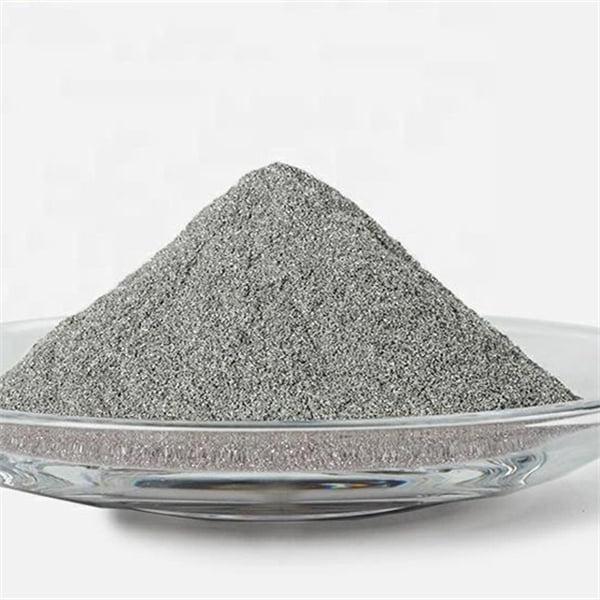
FAQ
F: Ist Inconel 625-Pulver geeignet für DMLS oder SLM 3D-Druck?
A: Ja, Inconel 625 lässt sich mit Laser-Pulverbett-Schmelzverfahren wie DMLS und SLM sehr gut verarbeiten, um funktionelle Metallteile mit hoher Dichte, komplexen Geometrien und hervorragenden Materialeigenschaften herzustellen.
F: Ist für Inconel 625-Pulver eine Wärmebehandlung erforderlich?
A: Die meisten additiv gefertigten Inconel 625-Bauteile benötigen keine spezielle Wärmebehandlung und können nach dem Entfernen der Halterungen direkt in Betrieb genommen werden. HIP trägt zur Verbesserung der Eigenschaften bei. Lösungsglühen und Alterungsbehandlungen sind ebenfalls Optionen.
F: Welche Partikelgröße ist für den Druck von Inconel 625-Pulver am besten geeignet?
A: Für DMLS/SLM-Verfahren bietet Inconel 625-Pulver mit einer Körnung von 15-45 Mikron ein gutes Gleichgewicht zwischen Verteilbarkeit, Fließfähigkeit und Auflösung. Feineres Pulver bis hinunter zu 10 Mikron kann für Teile mit sehr empfindlichen Merkmalen ausprobiert werden.
F: Ist Inconel 625 stärker als rostfreier Stahl?
A: Ja, Inconel 625 bietet bei allen Temperaturen eine viel höhere Festigkeit als jede andere Edelstahlsorte und gleichzeitig ein wesentlich besseres Korrosionsverhalten. Aber es ist auch teurer.
F: Kann Inconel 625 in Salzwasser rosten?
A: Nein. Der hohe Chrom- und Nickelgehalt von Inconel 625 macht es außerordentlich widerstandsfähig gegen chloridinduzierte Lochfraß- und Spaltkorrosion in Salzwasserumgebungen, so dass es sich für Schiffsanwendungen eignet.
